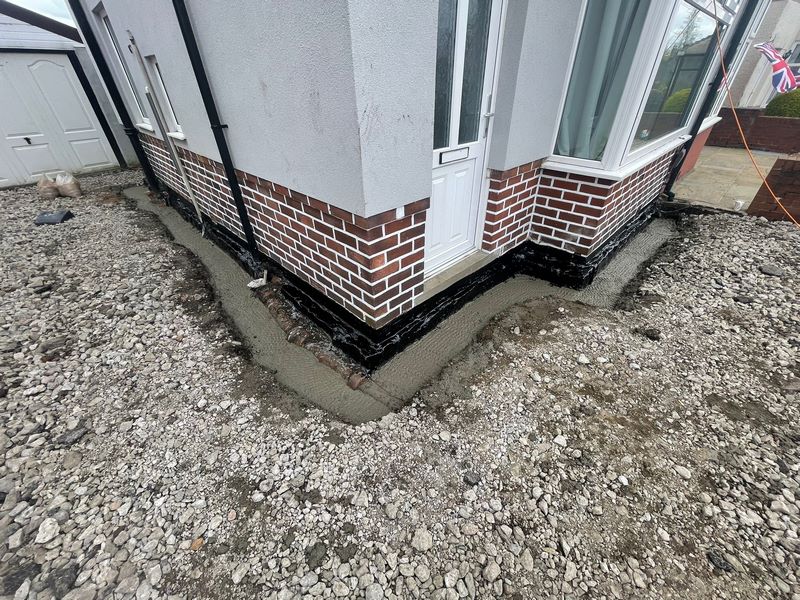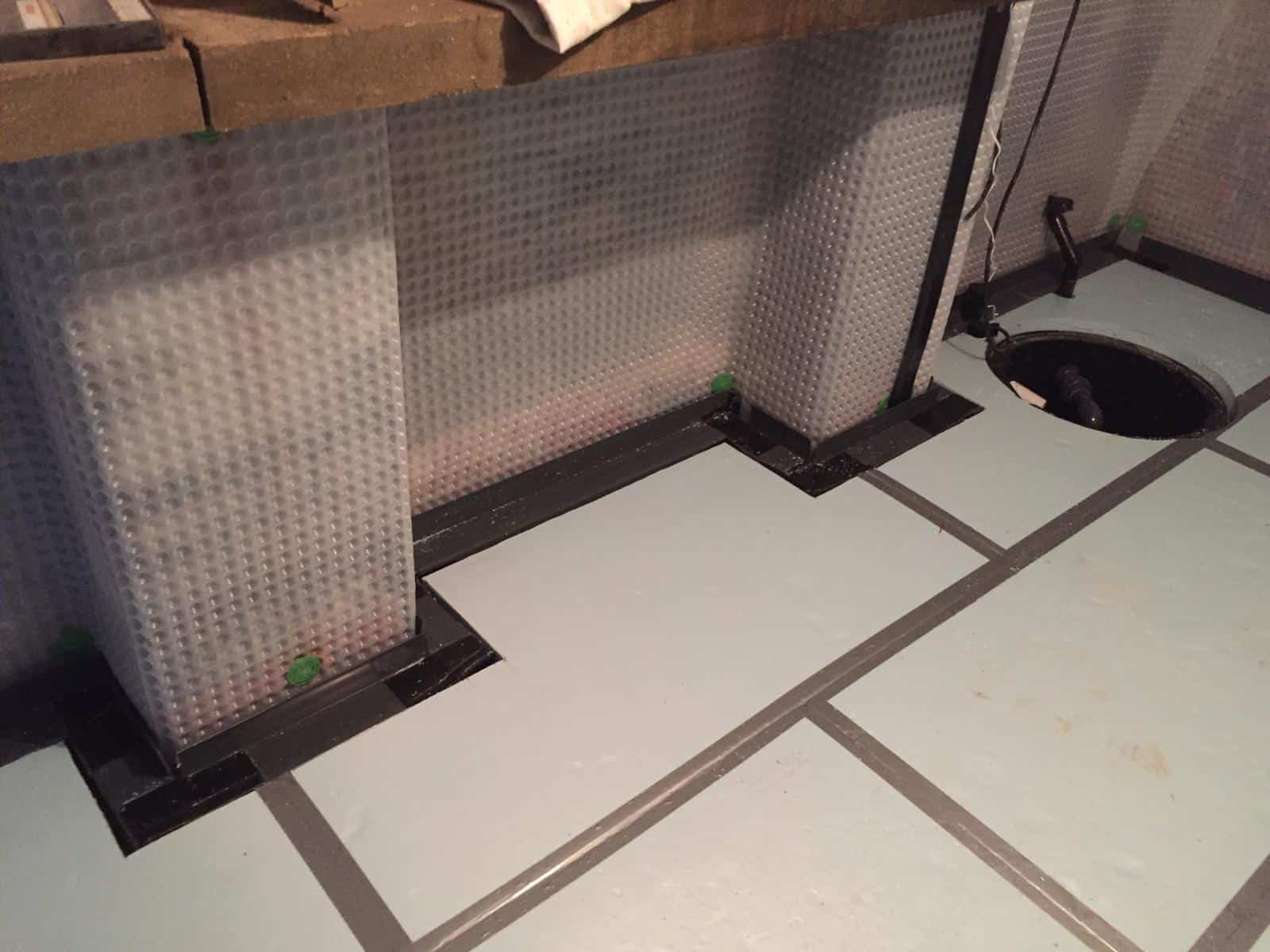Prevent structural damage with proactive damp removal newcastle
Prevent structural damage with proactive damp removal newcastle
Blog Article
Checking Out the Different Strategies and Solutions for Effective Damp Proofing
Wetness in structures positions significant obstacles to both architectural stability and interior air high quality. Various techniques and services have emerged to fight this prevalent problem. From conventional damp-proof membranes to ingenious chemical therapies, each method provides distinct benefits. Recognizing these alternatives is vital for reliable dampness control. Nonetheless, picking the right solution depends on particular building conditions and requirements, motivating more exploration into one of the most reliable damp proofing strategies available.
Comprehending the Reasons For Dampness
Moisture can occur from various resources, understanding these causes is crucial for efficient remediation. Typically, dampness stems from three primary resources: rising damp, passing through wet, and condensation. Climbing moist happens when groundwater travels upwards through porous materials, such as block or stone, often as a result of a lack of a reliable barrier (damp specialist newcastle). Permeating damp is commonly triggered by exterior aspects, consisting of roofing system leakages, malfunctioning gutters, or damaged wall surfaces, allowing water to penetrate a home. Condensation, on the various other hand, results from excess wetness airborne, commonly worsened by inadequate ventilation and temperature level differences, leading to water beads forming on surfaces. Recognizing these underlying concerns is important, as each sort of wetness requires a tailored method for removal. Proper assessment assists in establishing one of the most reliable services, inevitably guarding the structural integrity of a structure and boosting indoor air top quality
Typical Damp-Proof Membranes

Chemical Damp-Proofing Solutions
Chemical damp-proofing solutions provide an ingenious method to stopping wetness invasion in buildings. These techniques usually include the application of fluid chemicals that pass through stonework and create an obstacle versus rising moist. Generally utilized chemicals consist of silanes, siloxanes, and other water-repellent representatives that react with surface area products to develop a hydrophobic layer.The application procedure generally calls for boring holes into the walls, infusing the chemical remedy, and permitting it to heal. This technique is particularly beneficial for older structures where typical damp-proof membranes might be impractical. Chemical damp-proofing can be less disruptive and a lot more cost-efficient than considerable restoration projects.While effective, these remedies depend on appropriate application and ecological conditions for peak efficiency. mould removal newcastle. Routine upkeep and monitoring are important to assure the durability of the damp-proofing therapy. Generally, chemical damp-proofing stands for a flexible alternative for securing structures versus moisture-related damage
Dental Caries Wall Building Strategies
Cavity wall surface construction strategies offer various benefits, specifically in moisture control and energy effectiveness. By including an air gap between 2 layers of masonry, these walls properly mitigate water ingress while improving insulation. This mix not just safeguards structures from moisture however additionally contributes to decreased energy usage.
Advantages of Dental Caries Wall Surfaces
When thinking about reliable wet proofing techniques, the advantages of tooth cavity wall surfaces stand out prominently. Cavity walls are composed of 2 different layers, developing an air void that effectively minimizes dampness infiltration. This layout decreases the danger of dampness, as the outer wall functions as an obstacle against rain and water ingress. Additionally, dental caries walls improve thermal insulation, which contributes to power effectiveness by minimizing warm loss. They additionally provide audio insulation, helping to create a quieter interior environment. The air void permits for ventilation, which helps in wetness control and minimizes the likelihood of mold growth. These advantages not just enhance the overall convenience of a building but also add to its long life and architectural stability.
Moisture Control Approaches
Efficient dampness control methods are crucial in dental caries wall building to assure long-lasting defense against moisture. One key method includes the incorporation of weep holes, which promote water drainage from the tooth cavity, preventing build-up. Additionally, making use of breathable membrane layers can help take care of wetness degrees while permitting trapped vapor to get away. Appropriate positioning of insulation is also crucial, as it should not obstruct drainage paths. Additionally, ensuring that the outer leaves of the tooth cavity wall surface are built with waterproof materials improves total durability. Normal maintenance checks are important to determine any type of obstructions or damages early, safeguarding the framework's integrity. Ultimately, a combination of these strategies creates a durable protection versus wetness invasion in dental caries wall surfaces.
Insulation and Power Performance
Insulation plays a crucial function in improving power effectiveness within tooth cavity wall building. By integrating protecting products, these wall surfaces produce a thermal barrier that reduces warm loss and reduces energy consumption. Efficient insulation not only helps maintain a secure interior temperature but additionally minimizes the threat of wetness, as it avoids condensation within the wall surface tooth cavity. Numerous strategies, such as using rigid foam boards or mineral woollen, can be used to accomplish suitable insulation performance. Additionally, proper installation is important to ensure that gaps and gaps are minimized, which can otherwise endanger energy efficiency. Eventually, a well-insulated tooth cavity wall adds substantially to general sustainability and lowers cooling and heating expenses for property owners.
External Damp Proofing Techniques
External moist proofing methods are crucial for securing frameworks from wetness seepage. 2 effective strategies include the application of water resistant membranes and the setup of French drains. These remedies help alleviate water build-up and protect the honesty of buildings.
Waterproof Membrane Layer Application
While numerous techniques exist for stopping dampness access, the application of water-proof membrane layers continues to be a highly reliable external wet proofing strategy. These membranes are normally made from materials such as polyethylene, rubber, or changed bitumen, giving a durable obstacle versus water infiltration. The installment procedure entails using the membrane to the exterior surfaces of foundations or wall surfaces, making sure complete protection to protect against leakages. Appropriate adhesion and securing at joints are crucial to making the most of performance. Water-proof membranes can be used in different kinds, including liquid coatings and sheet membranes, allowing for flexibility based on the details demands of the framework. This approach not just secures structures from moisture yet likewise enhances their durability and architectural stability.
French Drainpipe Setup
One effective approach for taking care of groundwater and preventing wetness buildup around a structure's structure is the setup of a French drainpipe. This drainage system contains a trench full of gravel and a perforated pipe that reroutes surface water far from the structure. Appropriate setup requires cautious preparation, making sure that the drain slopes away from the framework to promote optimal water circulation. Additionally, the area of the drainpipe is important; it should be positioned in areas susceptible to merging or excess moisture. Routine upkeep, consisting of cleaning debris from the crushed rock and guaranteeing the pipe stays unobstructed, is vital for lasting performance. Inevitably, a well-installed French drainpipe can greatly lower the threat of water-related problems in basements and foundations.
Interior Waterproofing Approaches
Interior waterproofing methods are essential for protecting a building's interior from moisture infiltration and potential water damage. These approaches usually involve the application of specific materials and strategies made to produce a moisture obstacle within the framework. One common technique is the use of water resistant finishes or sealers on wall surfaces and floors, which avoid dampness from penetrating surfaces.Additionally, installing indoor drain systems, such as sump pumps, can properly manage water buildup in basements and creep spaces. An additional method entails using vapor obstacles, which are mounted to prevent dampness motion from the ground right into living spaces.Moreover, resolving any type of splits or gaps in walls or structures with suitable sealants assures an extensive protection versus water intrusion. By applying these interior waterproofing methods, residential or commercial property owners can considerably lower the threat of mold growth, architectural damage, and other moisture-related issues. Proper implementation of these techniques is vital for long-lasting protection and building integrity.
Routine Maintenance and Evaluation Practices
Normal upkeep and assessment practices are vital for assuring the lasting efficiency of damp proofing solutions check here in any kind of structure. Routine checks make it possible for homeowner to determine very early indications of dampness breach, such as peeling paint, mold and mildew growth, and moldy smells. These signs can signify underlying issues that call for instant attention.Inspections need to be conducted a minimum of annually, focusing on prone areas like basements, creep rooms, and outside walls. Throughout these assessments, homeowner should take a look at sealers, water drainage systems, and air flow to validate they operate correctly.Additionally, preserving gutters and downspouts is necessary, as clogged up systems can bring about water buildup near the structure. Applying a normal upkeep routine, together with timely fixings, can considerably extend the lifespan of wet proofing measures and protect the structural stability of the building. Proactive actions inevitably add to the total health and safety and security of the living atmosphere.
Often Asked Inquiries
How Much Time Does Damp Proofing Commonly Last?
The duration of damp proofing efficiency differs, typically lasting between 20 to half a century. Elements such as application top quality, environmental problems, and upkeep techniques significantly affect the durability of the wet proofing treatment.

Can I Damp Evidence My Home Myself?
The individual pondered the feasibility of DIY damp proofing. With proper research study and the best materials, it is possible. They likewise acknowledged the importance of professional advice to ensure durable effectiveness and avoid future concerns.
What Are the Signs of Inefficient Damp Proofing?
Indications of inefficient wet proofing consist of relentless musty odors, noticeable mold and mildew growth, peeling off paint, wet spots on walls, and timber decay - mould treatment newcastle. Property owners ought to attend to these problems immediately to avoid further damage and wellness concerns
Does Damp Proofing Affect Indoor Air Quality?

Just How Much Does Expert Damp Proofing Expense?
Specialist wet proofing prices vary significantly, commonly ranging from $1,000 to $5,000 relying on the residential or commercial property's dimension, the extent of the moist issue, and picked methods. Each scenario calls for a customized assessment for exact prices. Typically, dampness originates from three key resources: climbing damp, permeating damp, and condensation. When considering effective wet proofing approaches, the benefits of cavity wall surfaces stand out plainly. Outside wet proofing methods are vital for securing structures from moisture seepage. While different techniques exist for avoiding moisture access, the application of waterproof membranes continues to be an extremely reliable outside damp proofing method. Signs of inadequate moist proofing include consistent mildewy odors, noticeable mold growth, peeling paint, wet patches on walls, and wood degeneration.
Report this page